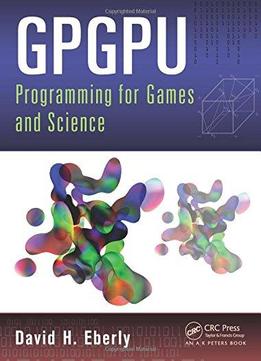
Gpgpu Programming For Games And Science
by David H. Eberly /
2014 / English / PDF
4.4 MB Download
An In-Depth, Practical Guide to GPGPU Programming Using Direct3D 11 GPGPU Programming for Games and Science demonstrates how to achieve the following requirements to tackle practical problems in computer science and software engineering: Robustness Accuracy Speed Quality source code that is easily maintained, reusable, and readable The book primarily addresses programming on a graphics processing unit (GPU) while covering some material also relevant to programming on a central processing unit (CPU). It discusses many concepts of general purpose GPU (GPGPU) programming and presents practical examples in game programming and scientific programming. The author first describes numerical issues that arise when computing with floating-point arithmetic, including making trade-offs among robustness, accuracy, and speed. He then shows how single instruction multiple data (SIMD) extensions work on CPUs since GPUs also use SIMD. The core of the book focuses on the GPU from the perspective of Direct3D 11 (D3D11) and the High Level Shading Language (HLSL). This chapter covers drawing 3D objects; vertex, geometry, pixel, and compute shaders; input and output resources for shaders; copying data between CPU and GPU; configuring two or more GPUs to act as one; and IEEE floating-point support on a GPU. The book goes on to explore practical matters of programming a GPU, including code sharing among applications and performing basic tasks on the GPU. Focusing on mathematics, it next discusses vector and matrix algebra, rotations and quaternions, and coordinate systems. The final chapter gives several sample GPGPU applications on relatively advanced topics.











